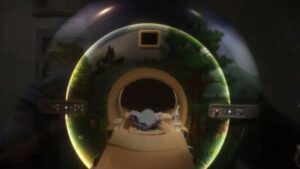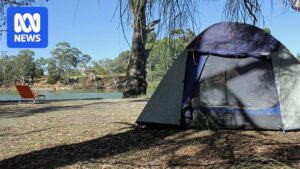
A site in the San Juan Basin of northwestern New Mexico is offering an unprecedented glimpse into the last days of the dinosaurs. At the Naashoibito Member site, rocks and fossils reveal a vibrant ecosystem teeming with diverse dinosaur species just before their sudden disappearance from Earth.
Paleontologists have long debated whether dinosaurs went extinct abruptly when a 6.2-mile-wide asteroid struck Mexico’s Yucatán Peninsula 66 million years ago, or if they were already in decline. This question hinges on finding fossils and accurately dating the surrounding rock to establish a precise timeline. Yet, fossils from just before the extinction event are rare.
Cracking the Geological Code
The Naashoibito Member site has been a focal point for paleontologists, comparable to the well-known Hell Creek and Fort Union Formations in Montana, Wyoming, and the Dakotas. Hell Creek has preserved evidence of species like Triceratops and Edmontosaurus, but lacks long-necked dinosaurs, raising questions about their fate before the extinction.
Recent research has dated rocks in the Naashoibito Member to the same period as Hell Creek, revealing the types of dinosaurs that roamed different parts of North America shortly before their extinction. Among them was Alamosaurus, one of the largest long-necked dinosaurs, according to a study published in the journal Science.
“What our new research shows is that dinosaurs are not on their way out going into the mass extinction,” said Andrew Flynn, lead study author and assistant professor at New Mexico State University. “They’re doing great, they’re thriving, and the asteroid impact seems to knock them out.”
Challenges in Dating Dinosaur Fossils
The San Juan Basin has yielded dinosaur fossils since the mid-1800s, but dating the rock layers is complex. Flynn explained that the layers must be exposed for study and then dated, a process requiring years of work and multiple evidence lines, often deterring researchers from exploring new areas.
The fossil record is incomplete, with some species missing entirely or lacking crucial geological context. Dr. Lindsay Zanno, head of paleontology at the North Carolina Museum of Natural Sciences, noted that species might not enter the fossil record, or be discovered without precise age estimates.
Erosion has stripped the Naashoibito Member of the perfect rock layers found at other North American sites, complicating timeline determinations. Work began in 2011 to establish a detailed timeline of dinosaur habitation, involving measuring rock layers, collecting samples, and identifying fossil locations.
New Insights into Dinosaur Diversity
The study paints a picture of two distinct dinosaur communities in North America, divided between north and south. Both regions had common species like Tyrannosaurus rex and Torosaurus, but differed in duck-billed dinosaur groups. The north lacked giant sauropods, leading some paleontologists to believe they had gone extinct.
However, in the south, Alamosaurus thrived, reaching lengths of 100 feet and weighing over 30 tons. This suggests that dinosaurs were thriving until the asteroid impact. Steve Brusatte, a professor at the University of Edinburgh, described the scene vividly, imagining a massive dinosaur walking one moment and the Earth shaking from the asteroid the next.
“I can imagine the scene, one minute a jet plane-sized dinosaur was shaking the ground as it walked, the next minute the whole Earth was shaking with the energy unleashed by the asteroid,” Brusatte said.
Climate and Habitat Differences
The differing dinosaur groups likely resulted from climate variations. The Naashoibito Member resembled a warm, humid tropical forest, akin to modern Panama, while Hell Creek was cooler, with an inland sea coastal plain. Dinosaurs adapted to local conditions, exhibiting rich diversity across the landscape.
Michael Benton, a professor at the University of Bristol, noted that while the new evidence is exciting, it represents only one location. His research suggests a decline in dinosaur populations before the asteroid strike, with species falling from 43 to 30 in western North America during the last 6 million years of the Cretaceous.
“As the authors also show in the paper, in general dinosaurs of the last 6 million years of the Cretaceous were less diverse,” Benton wrote.
Implications for Understanding Extinction Events
Darla Zelenitsky of the University of Calgary believes the findings could reshape views on dinosaurs in North America before the mass extinction. Her team’s work in Alberta aligns with the findings of stable dinosaur populations.
“The research team uncovered compelling new evidence (…) that dinosaurs were still going strong ‘til the very end,” Zelenitsky wrote.
While the study focuses on dinosaurs, it underscores a broader lesson about the vulnerability of species to sudden environmental changes. Brusatte emphasized that rapid climate shifts can overwhelm even the most resilient species.
“Sudden climate and environmental change can catch animals and ecosystems unaware,” he said, “and can defeat even the strongest and most iconic of species.”
The findings from the Naashoibito Member site not only enrich our understanding of dinosaur ecosystems but also serve as a poignant reminder of the potential impacts of environmental upheaval.






